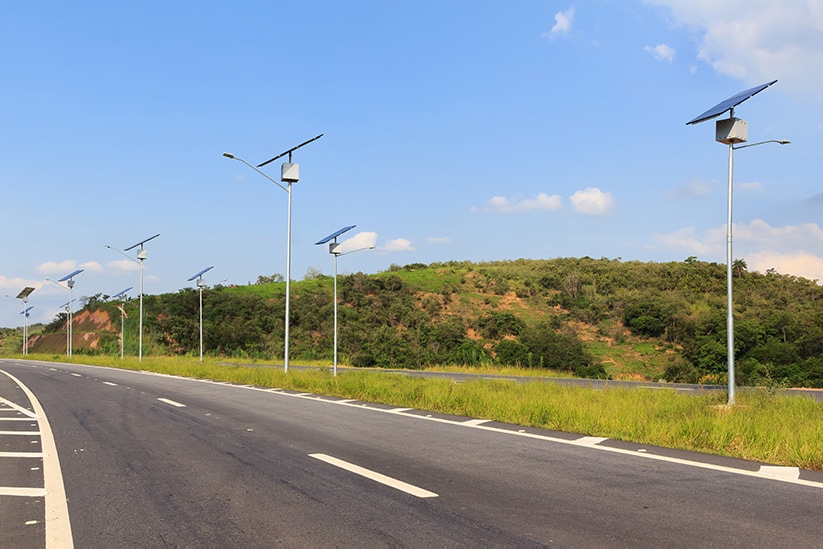Table of Contents
Introduction
Urban lighting is an essential aspect of modern city life, providing safety, security, and visibility for pedestrians and drivers alike. However, traditional street lighting systems are notorious for their high energy consumption, resulting in increased greenhouse gas emissions and financial burdens on local governments. Solar LED street lights offer a sustainable and efficient alternative that can help address these issues. In this blog post, we will explore the benefits of solar LED street lights, their functionality, and their potential to revolutionize urban lighting systems.
Section 1: Why Solar LED Street Lights are a Sustainable Choice
1.1 Energy Efficiency and Environmental Benefits
Solar LED street lights harness clean and renewable solar energy, reducing dependence on nonrenewable fossil fuels. These eco-friendly lights minimize greenhouse gas emissions, contributing to global efforts to combat climate change. Additionally, LED technology is far more energy-efficient than traditional lighting systems, using up to 80% less energy than incandescent bulbs.
1.2 Cost-Effectiveness
While the initial investment for solar LED street lights may be higher than traditional systems, their long-term cost savings are substantial. Solar LED lights have lower maintenance and operational costs, as they require no electrical grid connection and have longer lifespans. Furthermore, many local governments offer incentives and subsidies for renewable energy projects, making the switch to solar LED street lights even more financially attractive.
1.3 Improved Safety and Reliability
Solar LED street lights are independent of the electrical grid, ensuring that they continue to function during power outages. This increased reliability enhances safety for pedestrians and drivers, reducing the risk of accidents caused by insufficient lighting. Additionally, solar LED lights offer consistent and high-quality illumination, providing better visibility than traditional street lighting systems.
Section 2: How Solar LED Street Lights Work
2.1 Key Components
Solar LED street lights consist of several essential components that work together to provide efficient and sustainable illumination. These components include:
- Solar panel: This is responsible for converting sunlight into electrical energy, which is then stored in the battery.
- Battery: The energy storage unit that stores the electricity generated by the solar panel for use during nighttime or overcast conditions.
- LED light: The energy-efficient light source that provides illumination, consuming the stored electrical energy in the battery.
- Charge controller: A critical component that regulates the flow of electricity between the solar panel, battery, and LED light, preventing overcharging and extending the system’s lifespan.
- Photocell or light sensor: This component detects the level of ambient light, triggering the LED light to turn on at dusk and off at dawn automatically.
2.2 Functionality
During daylight hours, the solar panel absorbs sunlight and converts it into electrical energy. This energy is then stored in the battery through the charge controller. As the sun sets and the level of ambient light decreases, the photocell or light sensor detects the change and signals the LED light to turn on.
Throughout the night, the LED light consumes the stored energy in the battery to provide consistent and efficient illumination. At dawn, the photocell or light sensor detects the increasing ambient light and switches the LED light off, allowing the solar panel to resume generating electricity and charging the battery.
Section 3: Implementing Solar LED Street Lights in Urban Areas
3.1 Assessing Solar Potential
Before implementing solar LED street lights, it’s crucial to assess the solar potential of the intended installation area. Factors such as geographical location, climate, and shading from buildings or trees can significantly impact the system’s efficiency. A thorough assessment ensures that the solar LED lights will receive adequate sunlight for optimal performance.
3.2 Customizing Solar LED Street Lights
Solar LED street lights can be customized to suit various urban environments and lighting needs. Factors such as mounting height, pole spacing, and light intensity can be adjusted to provide the appropriate level of illumination. Moreover, integrating motion sensors can help conserve energy, as the LED lights will only activate when movement is detected.
3.3 Navigating Local Regulations and Incentives
It’s essential to research local regulations and requirements for solar LED street light installations, as different jurisdictions may have specific guidelines. Additionally, exploring available government incentives and subsidies can help offset the initial investment costs and expedite the transition to sustainable urban lighting.
Section 4: Success Stories and Future Outlook
4.1 Success Stories
Cities around the world have already witnessed the benefits of implementing solar LED street lights. Barcelona, Spain, installed over 19,000 solar-powered streetlights, reducing energy consumption by 30% and saving 2,000 tons of CO2 emissions annually. Similarly, Adelaide, Australia, replaced traditional streetlights with solar LED lights in various parts of the city, resulting in significant energy and maintenance cost savings. These success stories serve as inspiration for other cities looking to make the switch to sustainable urban lighting solutions.
4.2 Future Outlook
As technology continues to advance, we can expect further improvements in solar LED street light efficiency and performance. The integration of smart technologies and the Internet of Things (IoT) will enable advanced features such as remote monitoring, adaptive lighting, and predictive maintenance. Furthermore, innovations in solar panel and battery technology will lead to even greater energy generation and storage capabilities, making solar LED street lights an increasingly attractive option for urban lighting.
Conclusion
Solar LED street lights offer a sustainable and cost-effective solution to urban lighting problems, helping to reduce energy consumption, greenhouse gas emissions, and financial burdens on local governments. By understanding how solar LED street lights work and the factors involved in implementing them, cities around the world can make informed decisions about adopting this innovative technology. With continued advancements in solar and LED technology, as well as the integration of smart features, the future of urban lighting looks brighter than ever.



